A gap between teeth, or diastema, is a prevalent dental condition defined by a void between two or more teeth, mostly the upper front teeth. A gap between teeth with two types, midline and mandibular, results from various factors, such as genetic predisposition, developmental issues, and specific behaviors or medical conditions. Recognizing comparable conditions and pertinent research and comprehending the symptoms, treatment options, and causes of a gap between teeth is essential for effective management and correction.
The most prevalent symptom of a gap between teeth is the apparent space between the teeth, particularly the upper front teeth. An irregular bite results in mastication difficulties, speech difficulties such as lisps from air exiting through the crevice, gum discomfort or pain from food particulates, and bacteria irritating exposed gum tissue.
Professional dental interventions effectively treat gaps between teeth, including dental implants, which are effective for gaps that result from tooth loss, and orthodontics, which effectively aligns teeth and closes undesirable gaps. Invisalign provides a less conspicuous alternative to braces by employing clear aligners to close minor gaps. Dental bonding and porcelain veneers offer aesthetic solutions for small gaps by covering the space with composite resin or thin casings.
The causes of gaps between teeth include a disproportion between the size of the teeth and the jawbone. Other contributing factors are missing teeth, an oversized labial frenum, and gum disease that causes tooth migration. Incorrect swallowing habits that drive teeth forward and bad oral habits such as thumb sucking and tongue thrusting lead to a gap between teeth. Primary teeth loss in children causes temporary spaces that resolve as permanent teeth emerge.
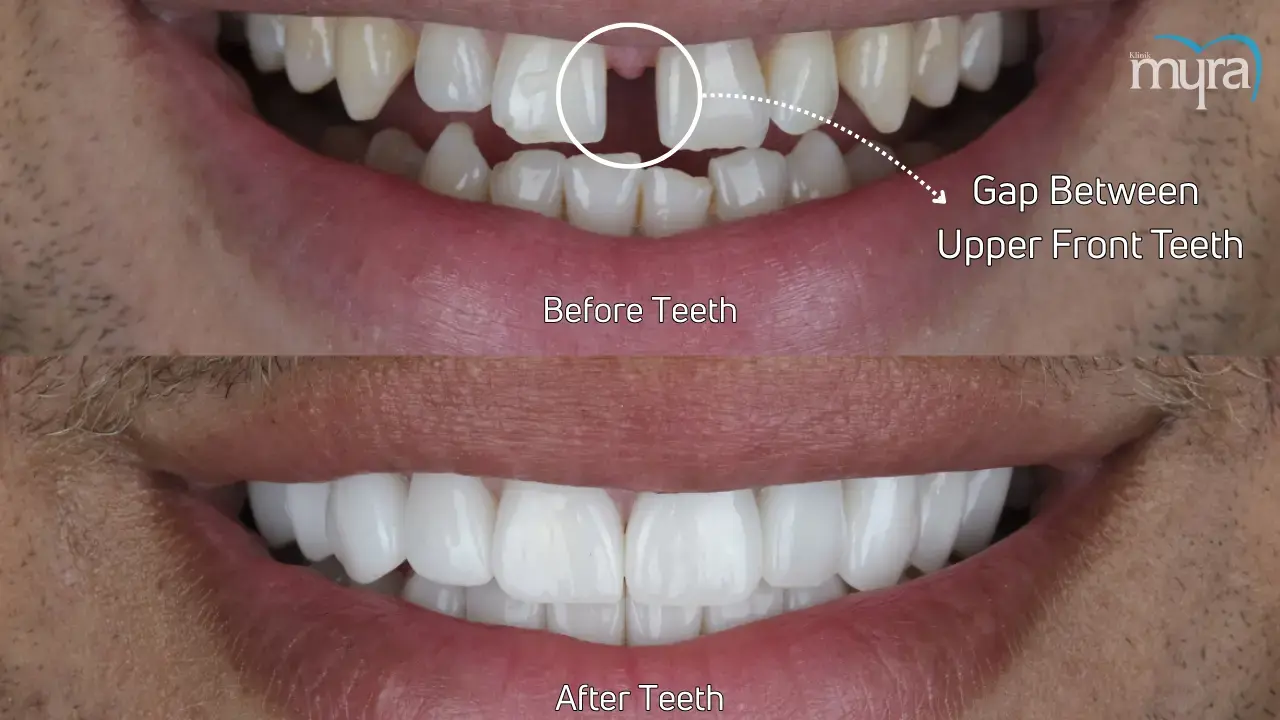
The topic of gaps between teeth is the subject of various studies that assess the aesthetic perceptions of midline diastemas. Does the presence of maxillary midline diastema influence the perception of dentofacial esthetics in video analysis? by Chaves, et al. has found that diastemas of 1 mm or greater harm dentofacial esthetics in video evaluations. Supernumerary teeth and labial frenum morphology are identified as contributing factors in Etiological Factors of the Midline Diastema in Children: A Systematic Review conducted by Nuvvula, et al. Tadros et, al. authored Association between superior labial frenum and maxillary midline diastema — a systematic review to investigate the correlation between the superior labial frenum and the maxillary midline diastema, recommending that frenectomy be postponed until permanent incisors have emerged to prevent recurrence. Resin composite restorations exhibit high survival rates and effective outcomes for diastema closure and recontouring in long-term clinical evaluations in the research Longevity of direct diastema closure and recontouring restorations with resin composites in maxillary anterior teeth: A 4-year clinical evaluation written by Korkut and Turkmen.
What are the Types of Gap Between Teeth?
The types of gap between teeth are listed below.
- Midline: The midline gap between teeth is a region between the two upper front teeth or central incisors. It results from genetic factors, excessive frenum tissue, or habits such as thumb gripping.
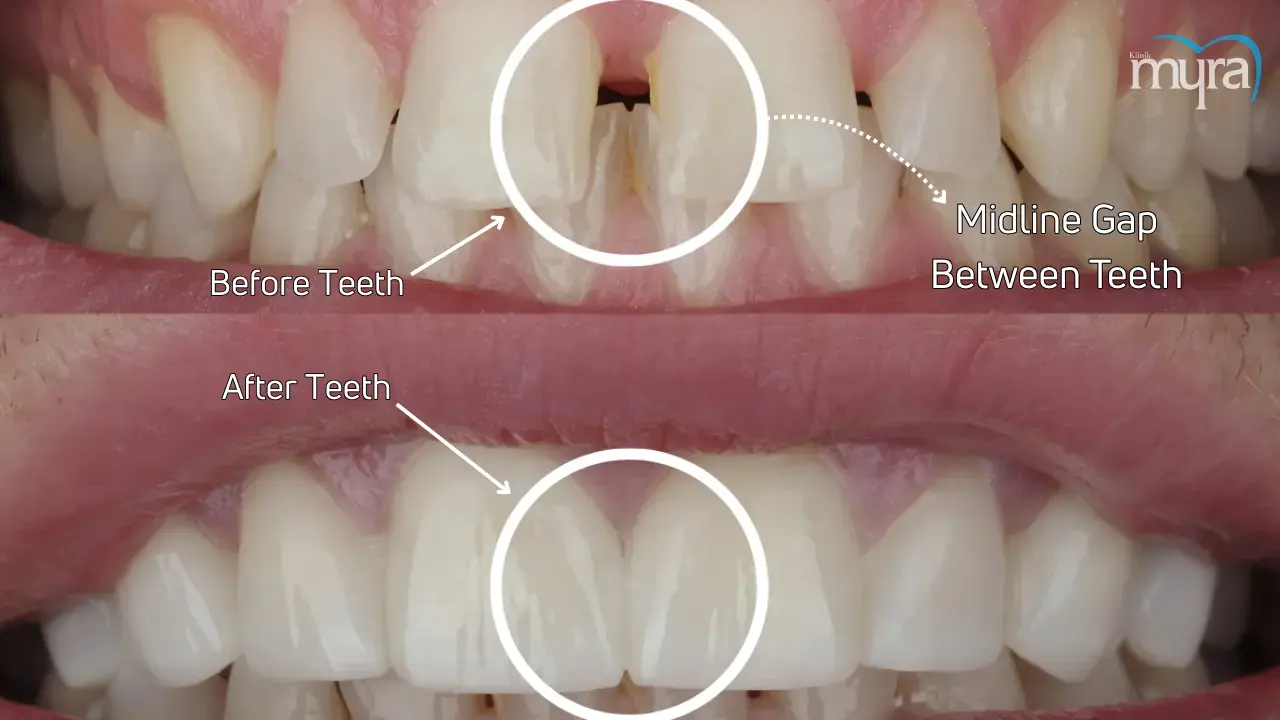
- Mandibular: The mandibular gap happens in the lower teeth. It results from a disparity between the mandible's measurement and the teeth' size, missing teeth, or periodontal disease.
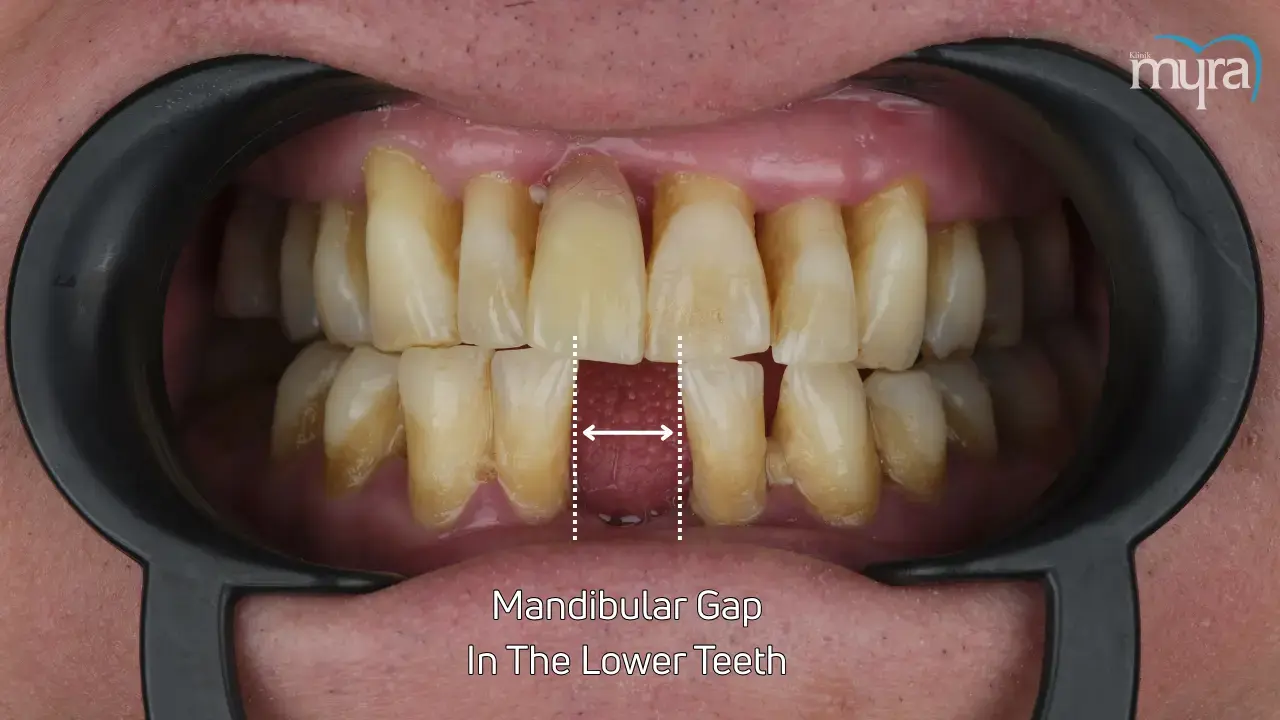
What are the Symptoms of Gap Between Teeth?
The symptoms of gap between teeth are listed below.
- Visible Gap Between Teeth: A visible gap between teeth is a conspicuous space or gap between two teeth observed in the front upper teeth. The condition arises from a discrepancy between the dimensions of the jaw bones and teeth, resulting in excessive space.
- Mastication Difficulty: Challenges in efficiently masticating food due to the gap between teeth. The space interferes with the positioning of the teeth, resulting in an irregular bite that impacts chewing and causes inadequate digestion and strain on the jaw muscles.
- Speech Difficulties: Difficulties articulating specific phonemes, such as the "s" or "th" sounds. A gap between teeth causes tongue position changes during speaking, resulting in lisps or difficulties in producing particular phonemes. It occurs when air escapes through the gap, influencing the creation of sounds.
- Gum Discomfort or Pain: Irritation or soreness in the gums beside the space. The gum tissue that is visible between the teeth is vulnerable to irritation caused by food particles and germs. It causes irritation or infection if it's not cleansed thoroughly.
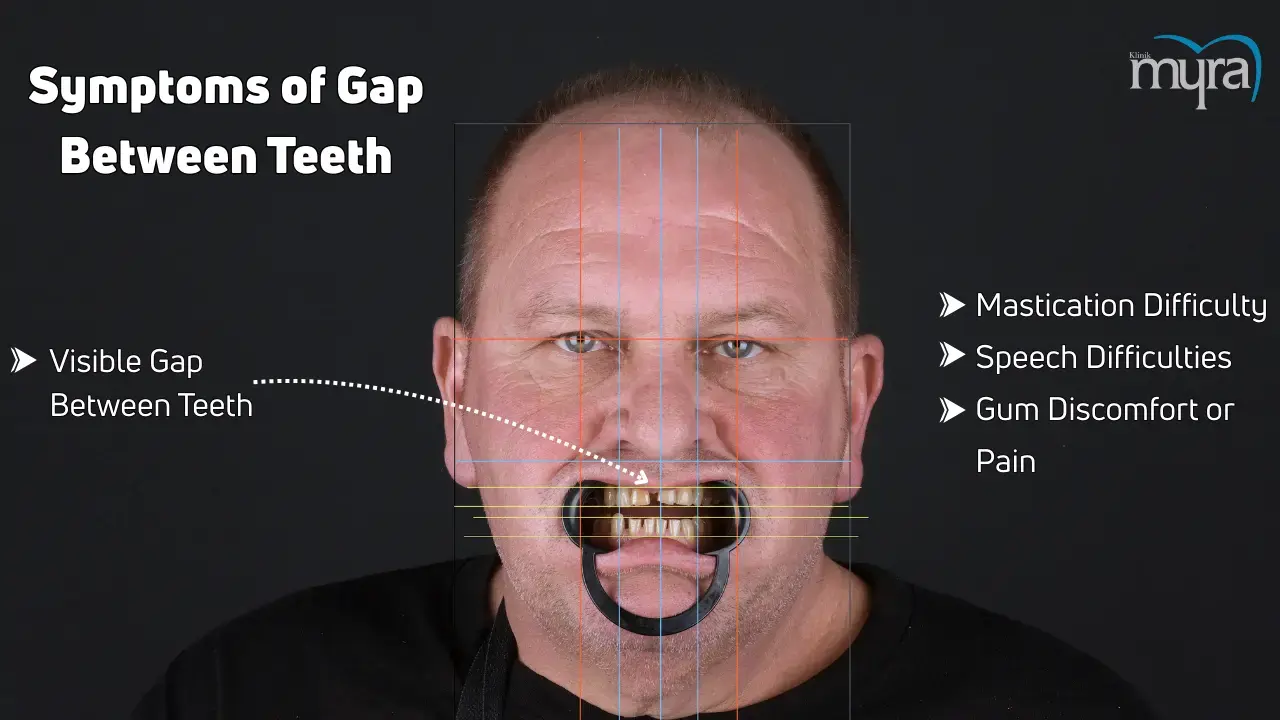
What are the Causes Gap Between Teeth?
The causes of gap between teeth are listed below.
- Tooth-Jaw Size: A disproportion between the size of the teeth and the jawbone causes gaps between the teeth. The gap between teeth results from teeth that are too tiny for the jawbone; the conditions run in families because of genetic causes.
- Missing Teeth: Certain teeth' absence or undersized nature often involves the upper lateral incisors. Gaps appear if some teeth are smaller than others or missing between the two front teeth.
- Large Frenum: An oversized labial frenum, the tissue extending from the inside of the upper lip to the gum above the upper front teeth, creates a gap between the front teeth. The condition requires surgical intervention to correct.
- Gum Disease: An infection of the gums that damages the soft tissue and destroys the bone that supports teeth, causing tooth migration and leading to gaps as the teeth become loose and shift positions. Inflammation and bone loss are critical factors in the process.
- Swallowing Reflex: An incorrect swallowing habit in which the tongue presses against the front teeth instead of the roof of the mouth causes the teeth to move forward and create gaps over time. The condition is due to repetitive pressure during swallowing.
- Bad Oral Habits: Behaviors such as thumb sucking, lip sucking, and tongue thrusting exert pressure on the front teeth, pushing them forward and creating gaps. Persistent habits during childhood significantly affect tooth alignment.
- Primary Teeth Loss: The natural loss of baby teeth as children grow results in temporary gaps. These gaps close when the permanent teeth come in, making it a normal developmental stage that does not require treatment.
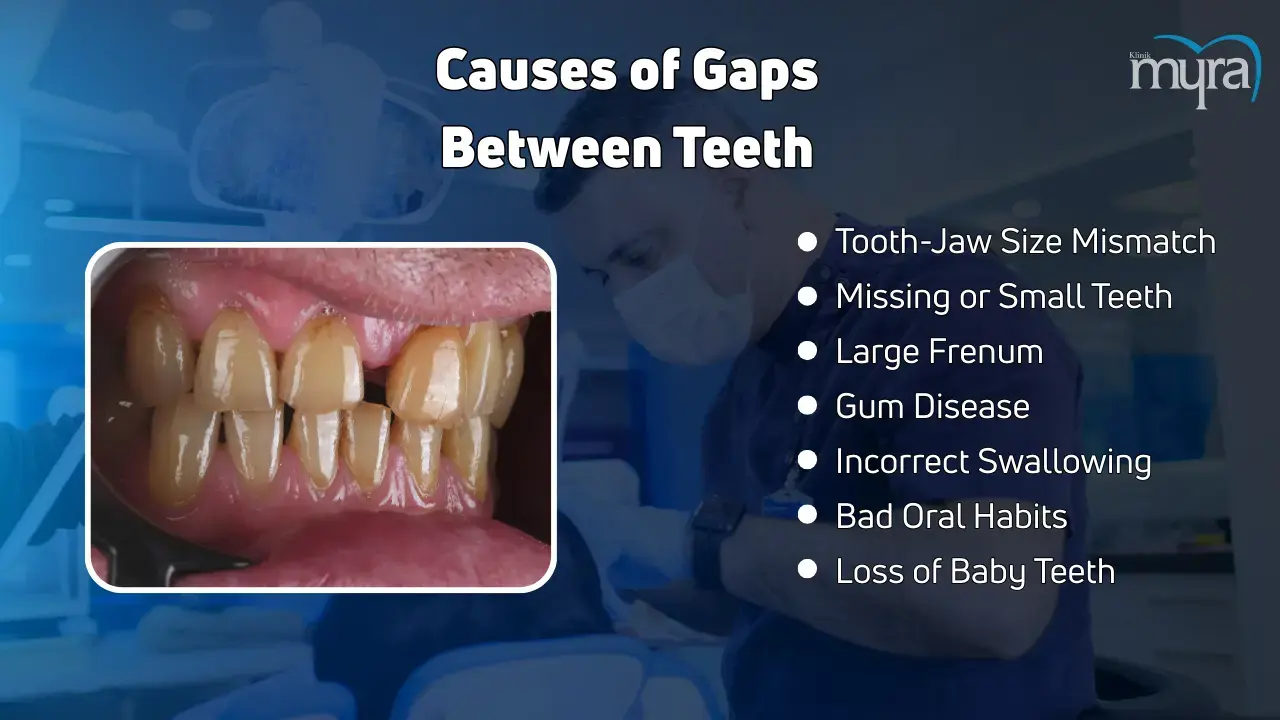
What are the Treatments for Gap Between Teeth?
The treatments for a gap between teeth are listed below.
- Dental Implant: Dentists recommend dental implants to patients who have a gap in their teeth due to tooth loss. Spaces between teeth invite harmful bacteria, bone loss, and the shifting of surrounding teeth, and implants are considered the best and most permanent solution for closing gaps resulting from permanent tooth loss.
- Braces: Braces are the most effective treatment for closing unwanted gasps and spaces in complicated cases, as traditional orthodontics are useful for alignment issues ranging from mild to severe.
- Invisalign: Invisalign is a dental treatment that utilizes advanced 3-D imaging to reposition and align a patient’s teeth without needing conventional metal braces. Clear aligners exert pressure on the teeth to bring them closer together, reducing gaps and enhancing bite alignment. The treatment yields outcomes comparable to traditional braces but without the presence of metal, rendering it particularly suitable for addressing tiny gaps.
- Dental Bonding: Dental bonding is an appropriate treatment for small spaces between the front teeth and for improving the appearance of teeth. The dentist meticulously prepares the surface of the teeth and applies a tooth-colored bonding substance, expertly utilizing composite resin to conceal the gap.
- Porcelain: Porcelain veneers are thin shells placed on the teeth' surface to hide stains and fill in minor gaps. Veneers completely change the appearance of imperfect teeth, creating a well-aligned and flawlessly formed smile, all in just one dental appointment.
- Dental Crowns: A porcelain crown seals the opening left by a little tooth. The dentist suggests the most suitable treatment strategy for meeting aesthetic and functional goals based on the size and severity of the gap.
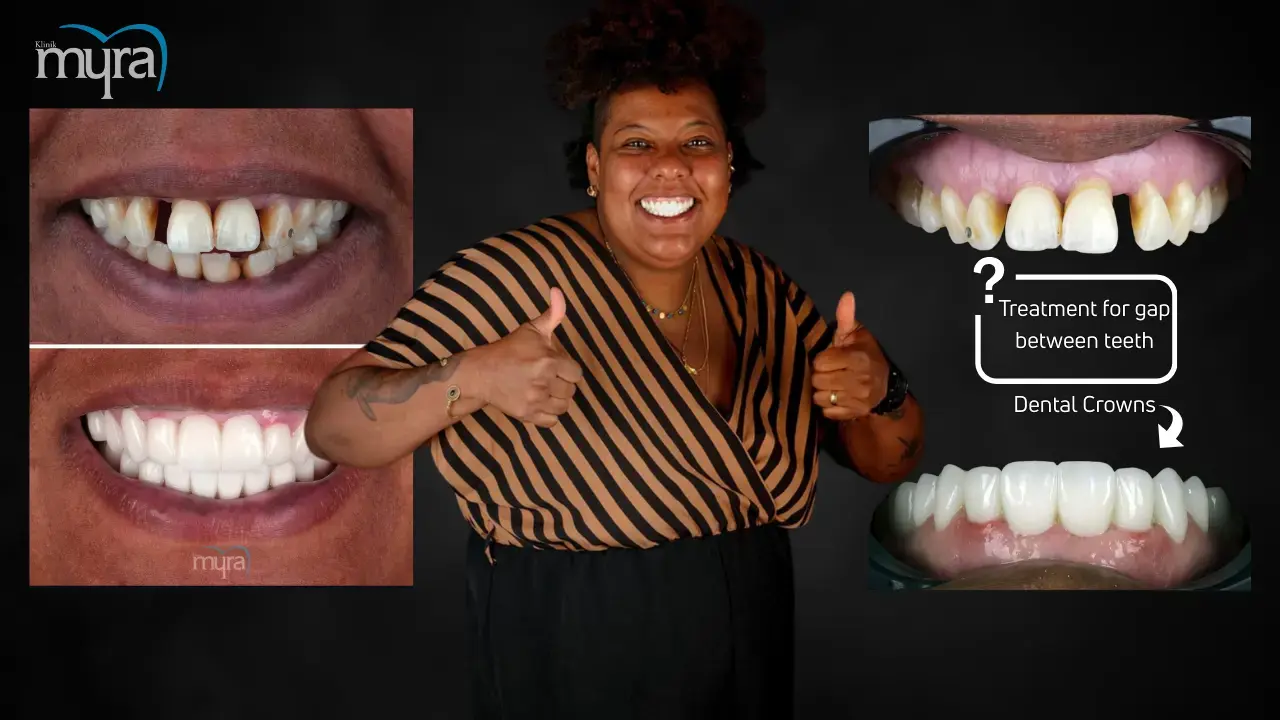
Can Gap Between Teeth Be Treated At Home?
No, the gap between teeth cannot be treated at home. Seeking professional dental assistance is necessary to effectively treat and rectify the gap between teeth. The condition necessitates specific expertise and correction procedures recreated with home treatments. Dentists utilize orthodontic appliances such as braces, Invisalign, and dental implants, which need meticulous fitting, adjustment, and ongoing monitoring to guarantee accurate alignment and closure of gaps. Braces require periodic tightening and adjustments an orthodontist performs to progressively shift teeth to the desired position.
Home treatments are not precise or compelling enough to cure the gap between teeth. Using do-it-yourself (DIY) techniques, including rubber bands to fix gaps, results in substantial oral health problems, such as dental misalignment, gum harm, and tooth loss. For example, elastic bands restrict blood flow to the teeth, leading to significant complications.
Many home remedies provide temporary relief or cosmetic improvement but do not provide a long-term solution. For example, dental wax is a temporary solution for filling tiny gaps but does not address fundamental tooth structure or alignment problems. Only dental bonding or porcelain veneers, which are expert procedures, provide durable and structurally solid options.
What are the Researches about Gap Between Teeth?
The research about gap between teeth is about evaluating the esthetic perceptions, etiological factors, associations with anatomical features, and long-term clinical performance of treatments.
The research, “Does the presence of maxillary midline diastema influence the perception of dentofacial esthetics in video analysis?” investigates and assesses the impact of a midline diastema on the perceptions of dentofacial esthetics in orthodontists, restorative dental specialists, prosthodontists, and laypersons. Results demonstrated that dentofacial esthetics were adversely affected by diastemas of 1 mm or more in a frontal facial evaluation conducted using video. The study evaluated the esthetic perceptions of 153 evaluators using visual analog scales.
Etiological Factors of the Midline Diastema in Children: A Systematic Review is a study that evaluated the etiological factors that contribute to midline diastema in children under 12 using published data. The review article identified supernumerary teeth, nasal ventilation condensation, and labial frenum morphology as the most prevalent causes. The Newcastle-Ottawa Scale evaluated the quality of eight studies from India, Korea, Brazil, and Canada. The quality of the studies varied depending on the scale.
Association between superior labial frenum and maxillary midline diastema — a systematic review is an investigation that scrutinized the correlation between the superior labial frenum and maxillary midline diastema (MMD), emphasizing pediatric cases. Its results indicate that MMD is associated with certain types of frenum, such as papillary and papillary penetrating frenum. It means that frenectomy must be delayed until the permanent lateral incisors erupt. Orthodontic intervention must precede surgical options to prevent diastema relapse, according to the review, which included 11 studies.
The long-term clinical efficacy of resin composite restorations for diastema closure and recontouring in maxillary anterior teeth was assessed in the research, Longevity of direct diastema closure and recontouring restorations with resin composites in maxillary anterior teeth: A 4-year clinical evaluation. The study determined that the survival rate was 90.3%, and the mean survival durations for various composite materials and varieties of restorations were robust. The study examined 216 restorations in 53 patients and determined that monochromatic direct composite restorations satisfied functional and aesthetic requirements.
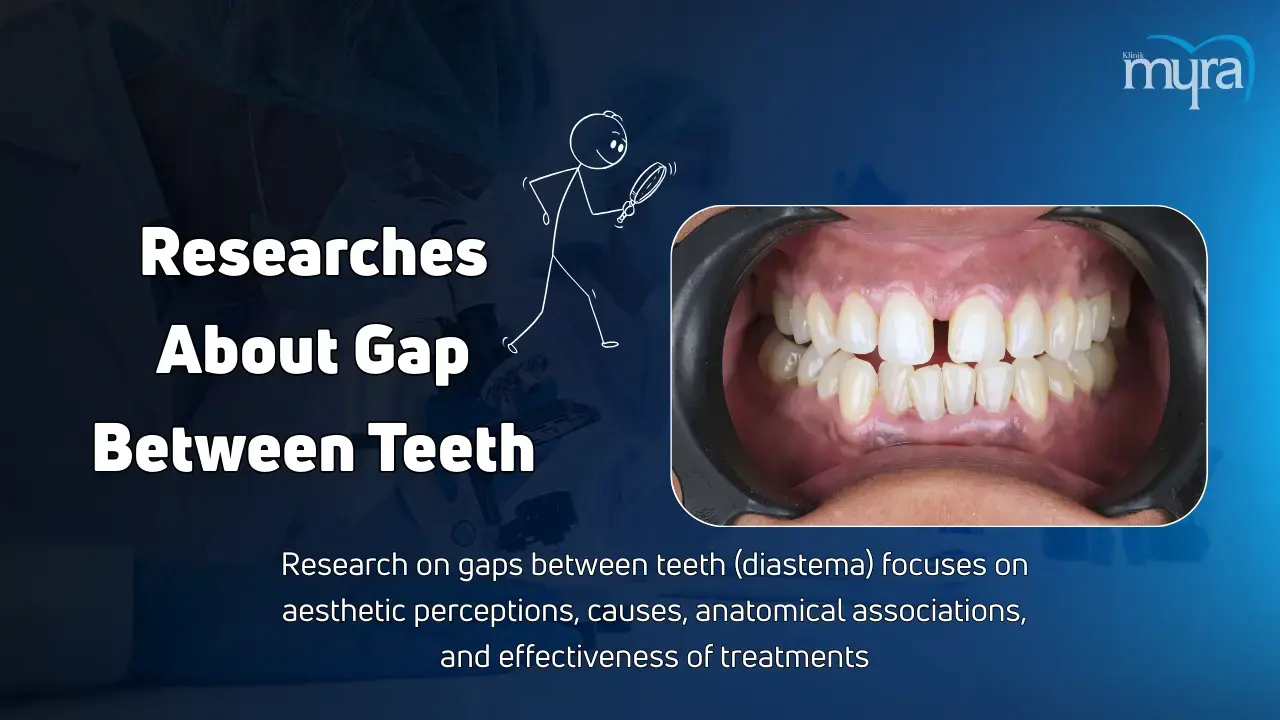
What are the Differences between Gap Between Teeth and Wisdom Teeth Problems?
The differences between a gap between teeth and wisdom teeth problems lie in their origins, symptoms, and treatments. A gap between teeth, known as diastema, occurs when there is excess space between two or more teeth due to a size discrepancy between teeth or abnormal jawbone growth. The condition is cosmetic or functional, influencing speech and chewing ability. Treatments for a gap between teeth include orthodontic braces to close the gap, dental bonding, or veneers to reshape the teeth for a more uniform appearance.
Wisdom teeth problems arise when the third molars, known as wisdom teeth, become impacted or erupt improperly due to lack of space in the jaw or misalignment. Symptoms include pain, swelling, infection, or difficulty opening the mouth fully. Treatments for impacted wisdom teeth problems involve extraction to alleviate discomfort and prevent complications such as gum disease or damage to adjacent teeth.
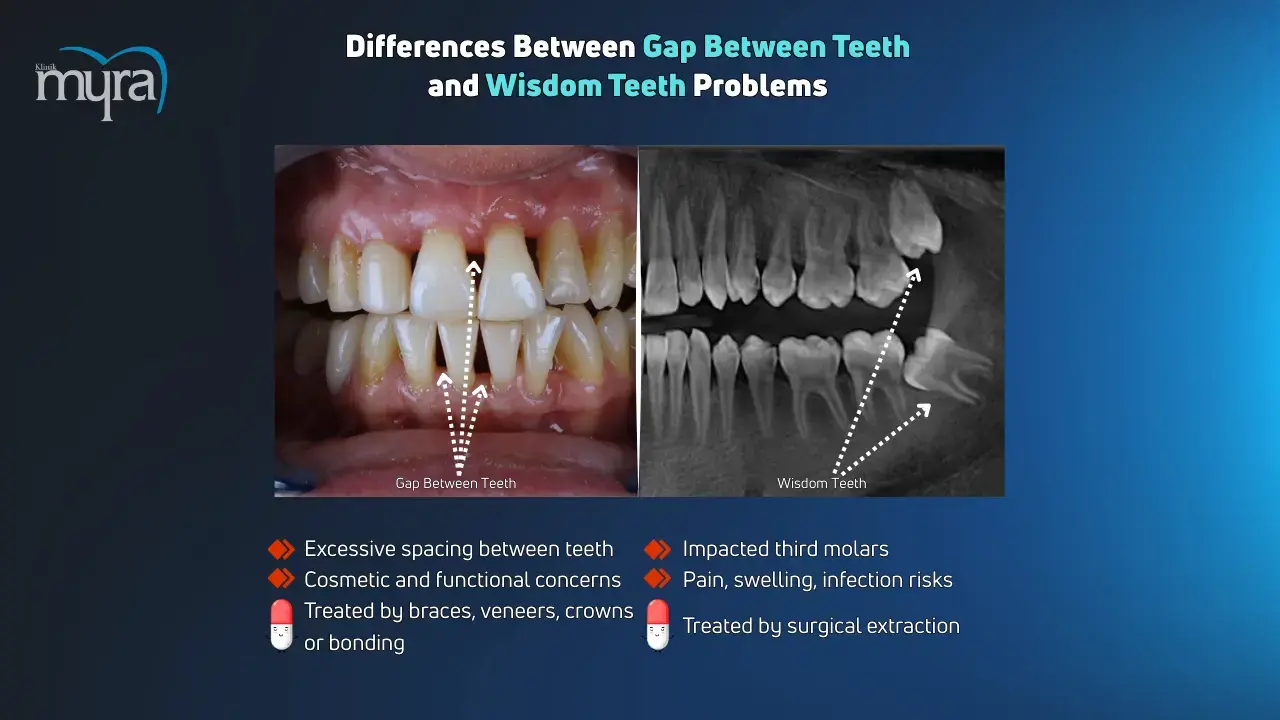
The gap between teeth and wisdom teeth issues share a lot of similarities when it comes to handling and safeguarding. Good oral hygiene practices, including regular brushing and flossing, are essential to maintain oral health and prevent complications associated with the two conditions. Routine dental check-ups help monitor the development of wisdom teeth and identify potential issues with gaps between teeth early on. Early intervention and personalized dental care are vital in addressing these conditions effectively and ensuring optimal oral health.





